
I had a little moment with this smoke bush and eremurus in the Carol & Randall Shinn garden on the recent bloggers’ tour of Colorado gardens. Hitting notes bright and deep, still in that incipient sparkle stage, buds concentrated and full of promise, not yet dissipated. Newborn fresh tints of blue-green, pale yellow, deep burgundy. Luminous spires against soft dark mounds of leaves with a flash of gold glitter from the still-hard buds that will soon transform into puffs of this tree’s eponymous smoke.
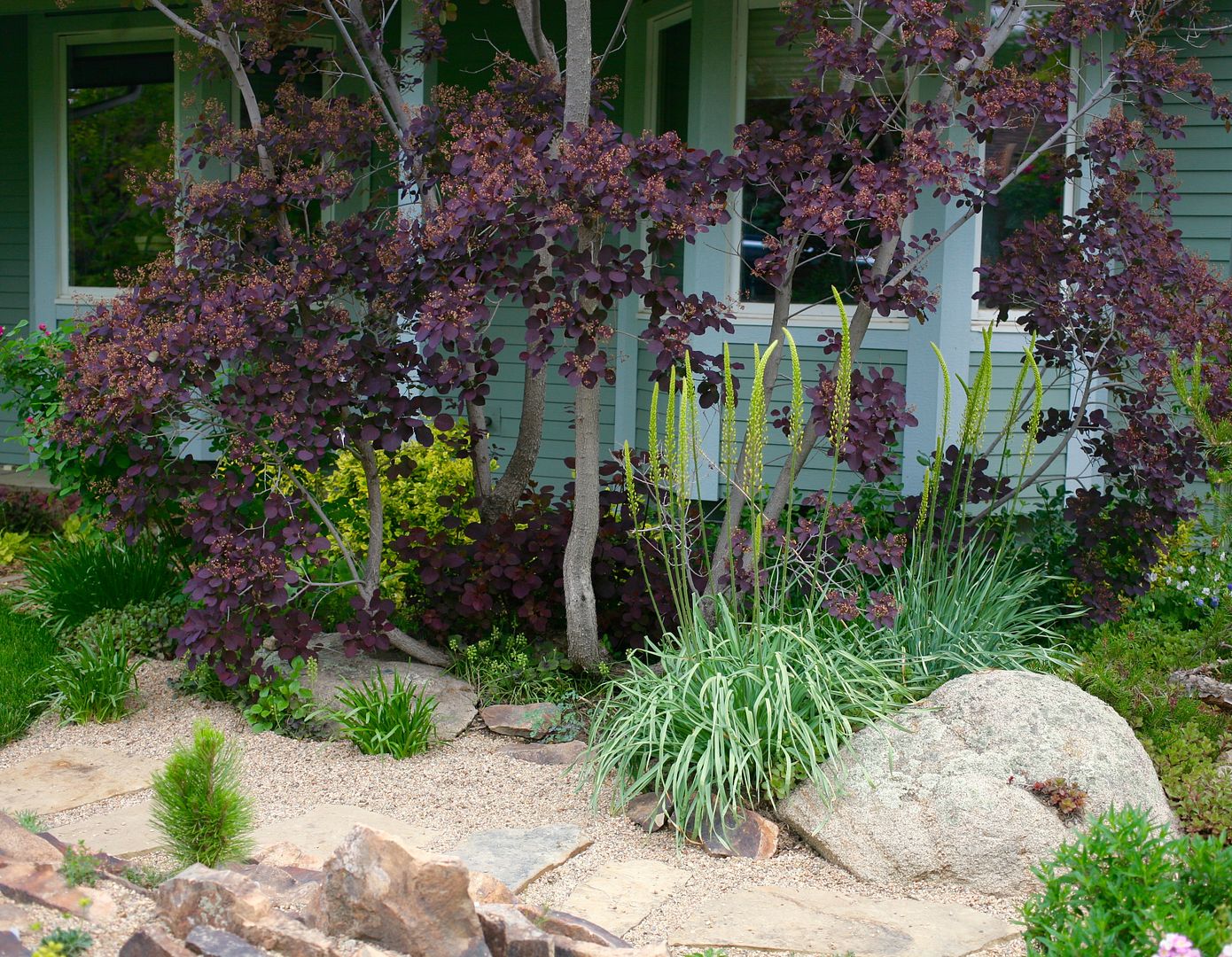
And notice how the cotinus leaves are delicately balanced, fanning out and leading the eye over the slim trunks, buoyantly leavening that deep color. All of it set off by that spare, bisque-colored path of gravel and rock. I mean…holy cow. There is such an incredible watchfulness behind creating this scene in mid June, years of it, that culminates in a moment perfectly timed and delivered like this.

From the street the smoke tree is visible, but that little moment I had at the curve in the path to the backyard is unavailable from the street. Gardens made first and foremost from an intimate knowledge of plants are rare indeed, and a visit to one like the Shinn garden is filled with moments like the one I had with the eremurus and smoke tree. The problem is, I can’t recreate a comprehensive tour of the garden for you, because I kept getting snagged by those little moments.

There was that moment with the oriental poppies, strangers to my zone 10.

The moment when I was finally able to experience that classic early summer association of bearded iris, peonies, lupines and oriental poppies I’ve read about since the beginning of time. That the classics came intermixed with penstemons, conifers, and lots of rock was a uniquely Coloradan variant on the theme. The rocks in all their guises were a fantastic backdrop to the piercingly strong colors.
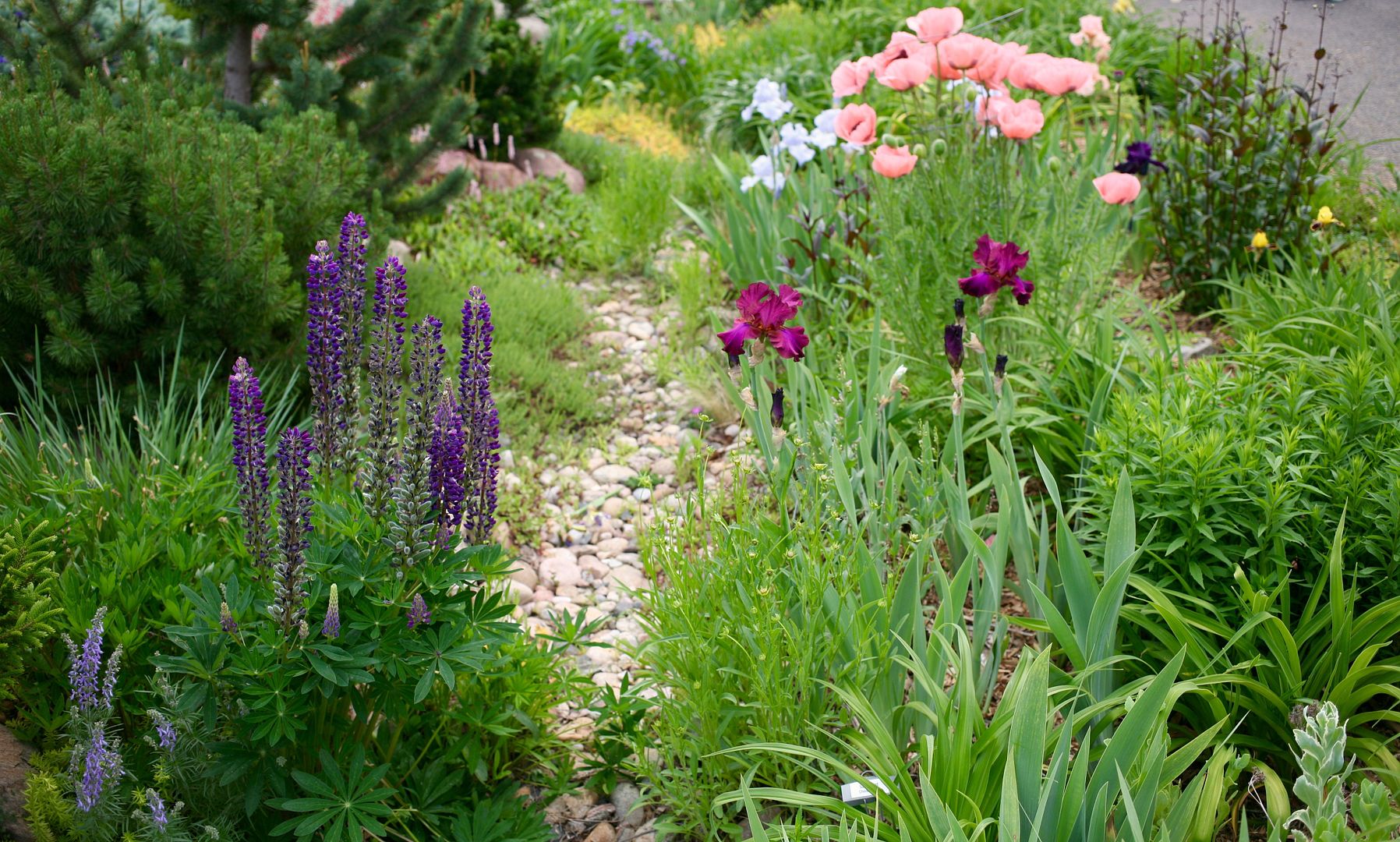




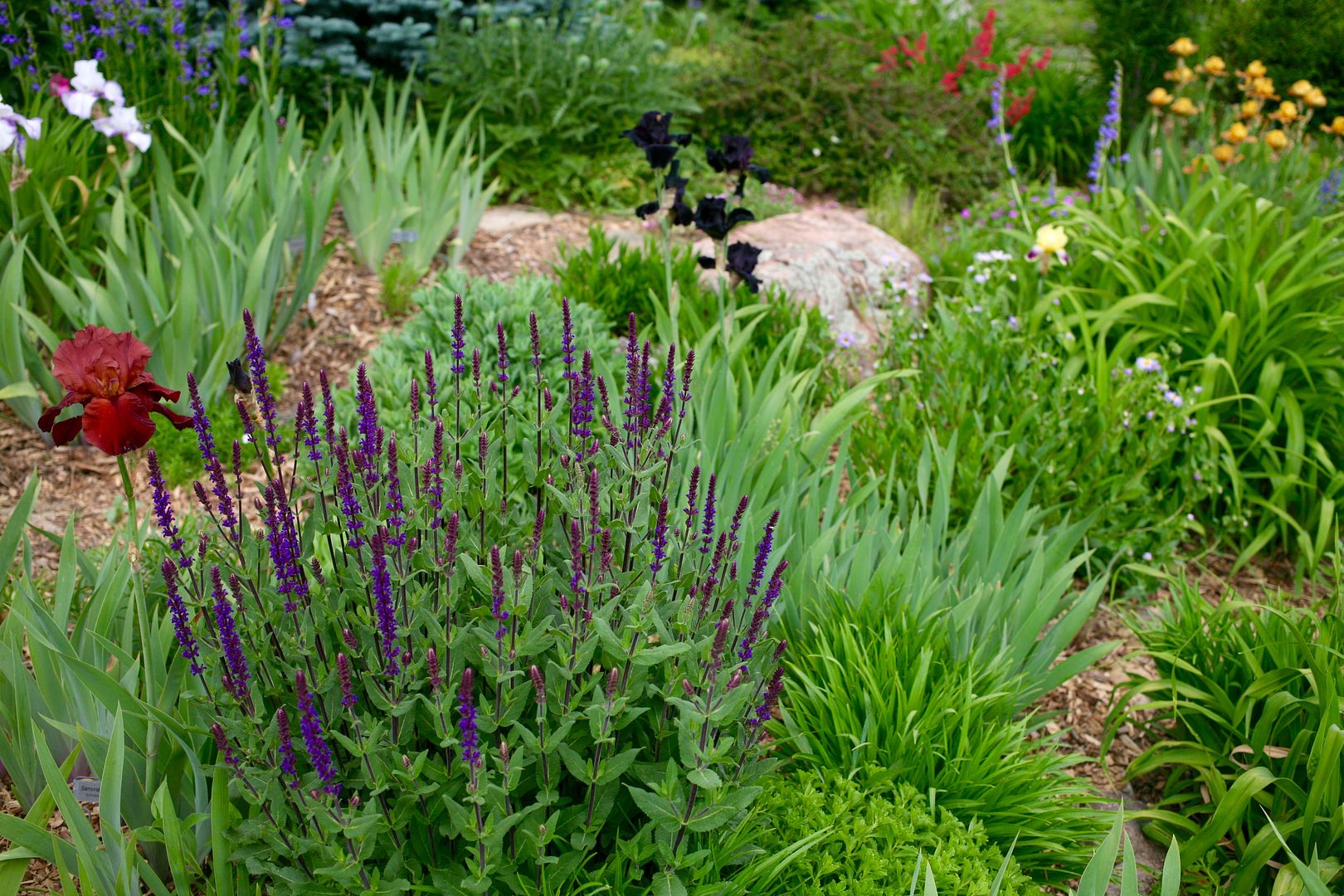


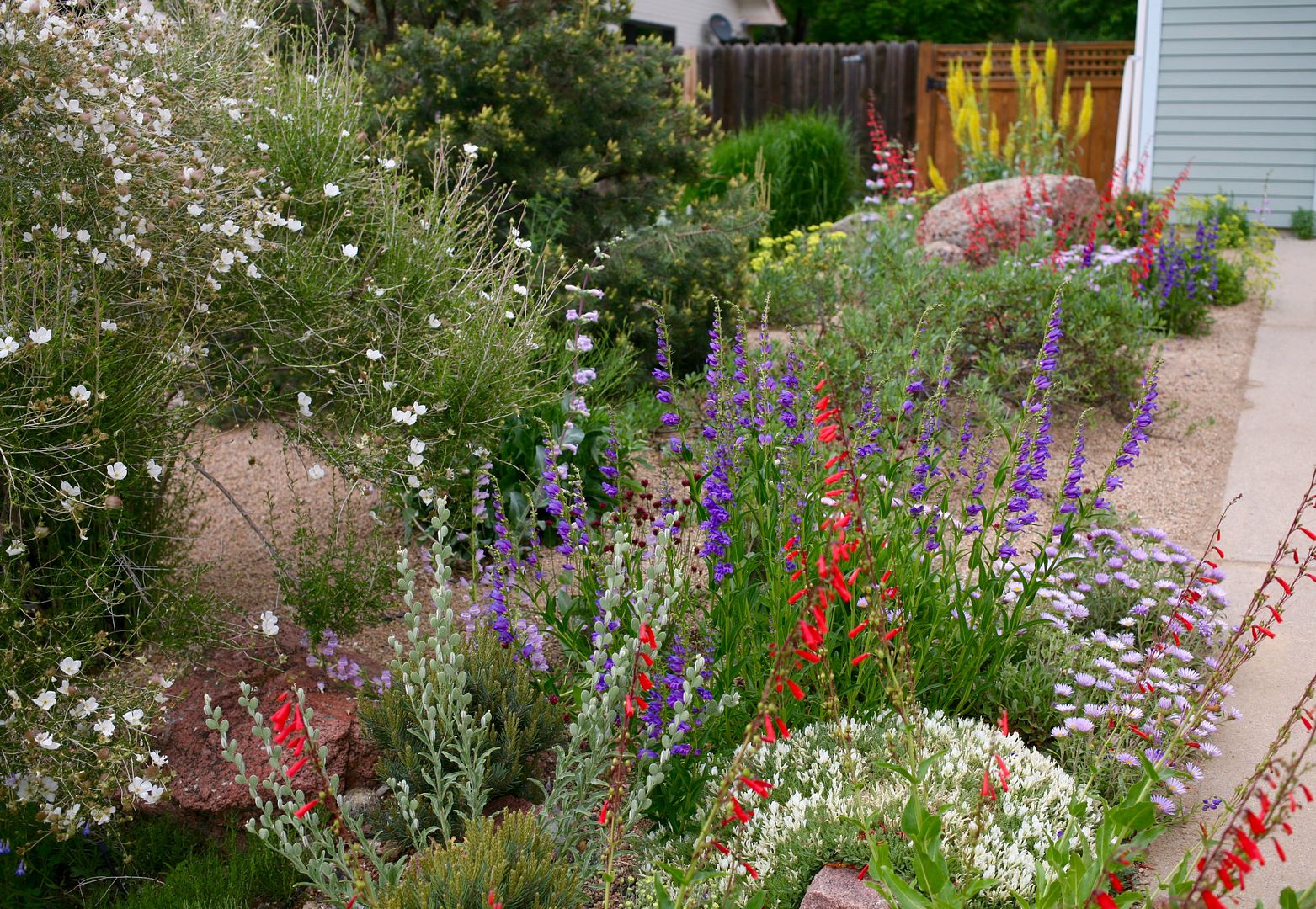







I’ve been looking everywhere for my copy of Reginald Farrer’s book on rock gardens since returning from Denver. I can’t believe I finally decluttered that out of my life, but it’s possible. (“Having chosen an open aspect and conceived your plan, you must invariably excavate the soil to a foot or 15 inches below ground level. Now comes your soil: This must be a mixture that is both light and rich.” — The English Rock Garden, 1918)
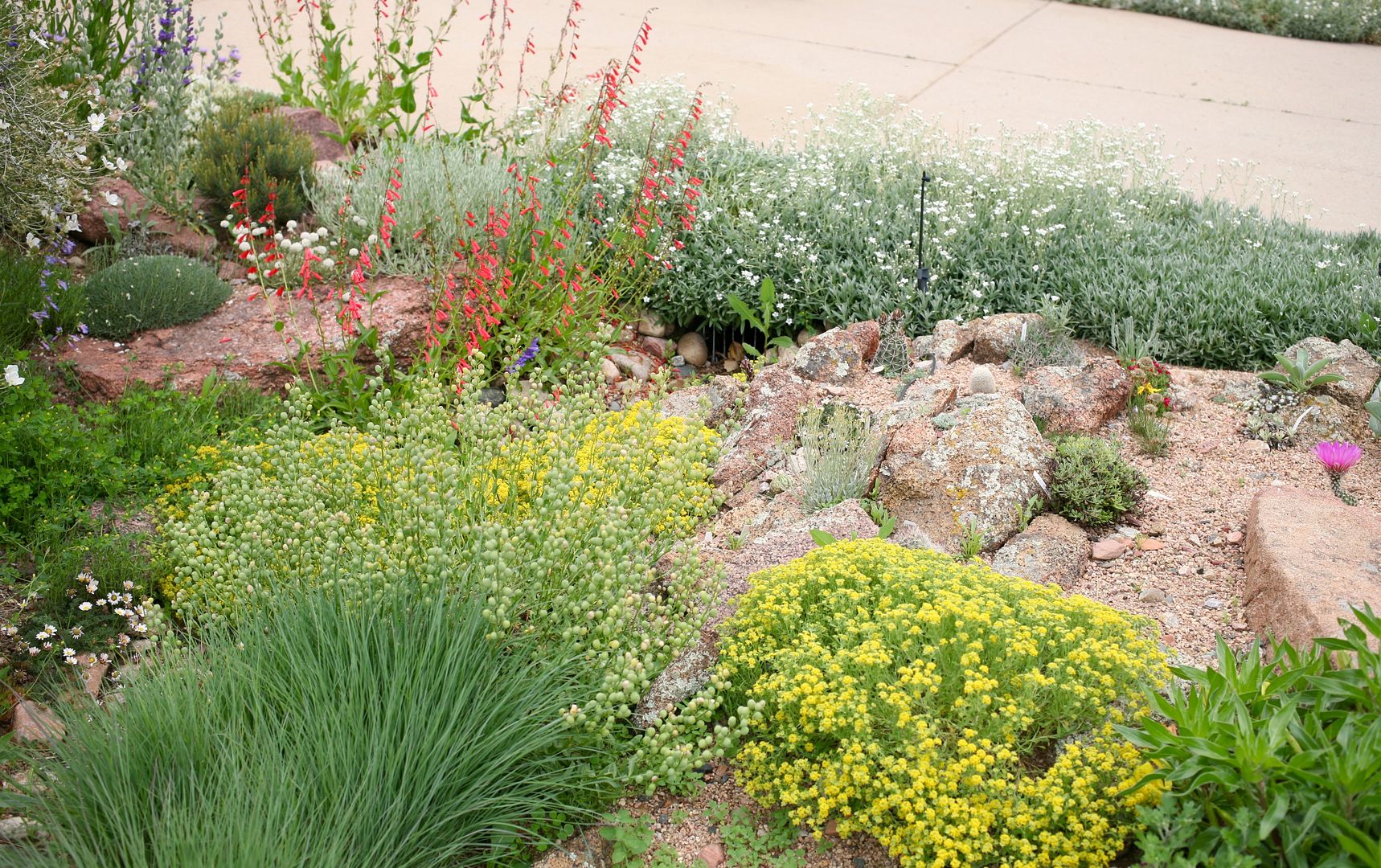
Because that was definitely another moment, with the rock gardens.


In the Shinn garden were examples of rock gardening known as crevice gardens. “Instead of placing rocks into the soil berms (mounds of soil) from the side like stepping stones up the side of a hill, they use flat stones (such as pieces of flagstone or slate) that are pushed down into the soil vertically from the top. These vertical pieces are closely spaced leaving deep, narrow channels of soil for planting.” — High Country Gardens
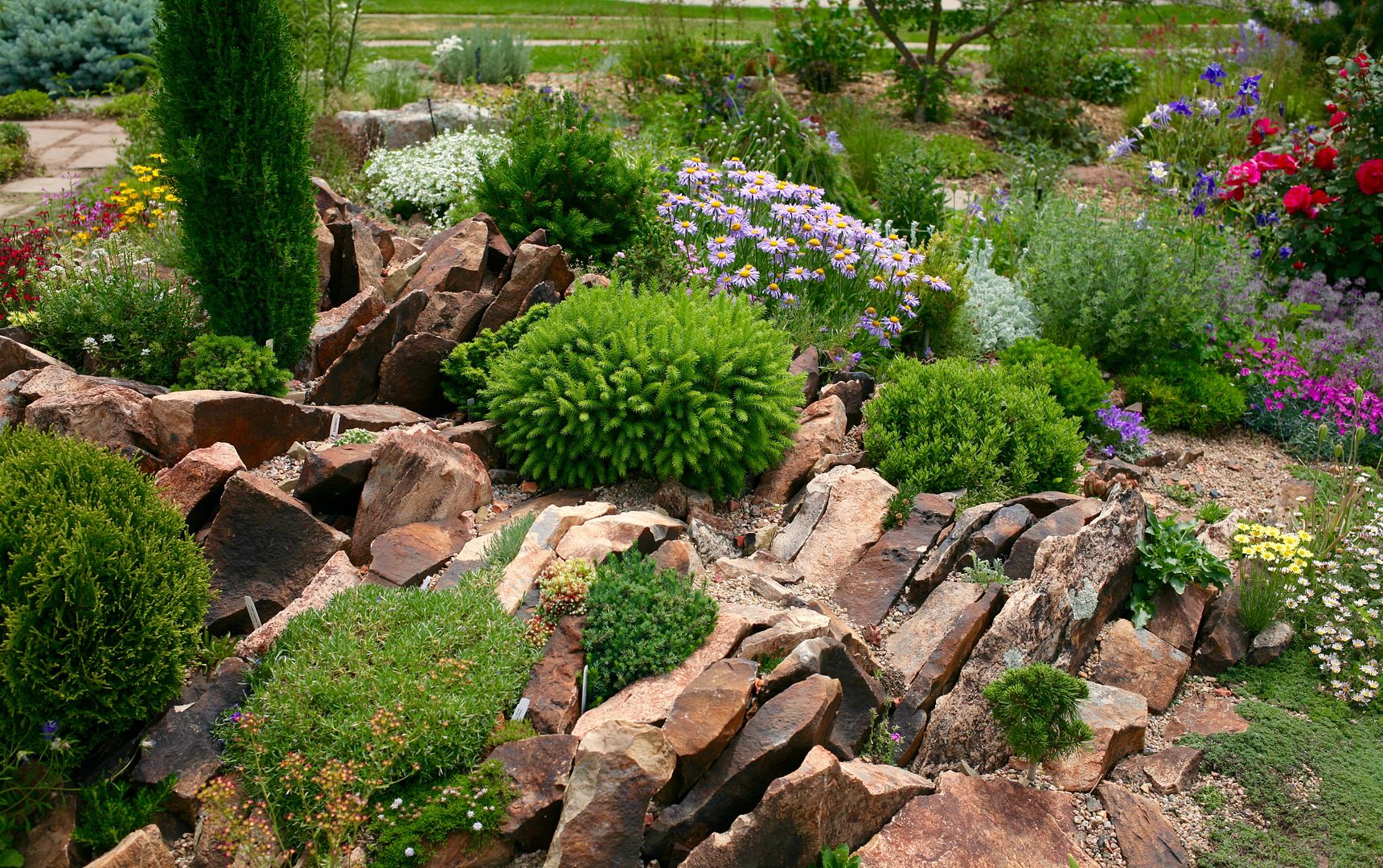
A young man named Kenton Seth has become smitten by rock and crevice gardens and was responsible for those we saw at the Shinn garden. (See “This unusual garden style could be a sustainable solution for urban landscapes,” The Washington Post, June 5, 2019, describing the crevice garden Kenton helped build with Tony Avent at Juniper Level Botanic Garden.)




in a container at the back of the house


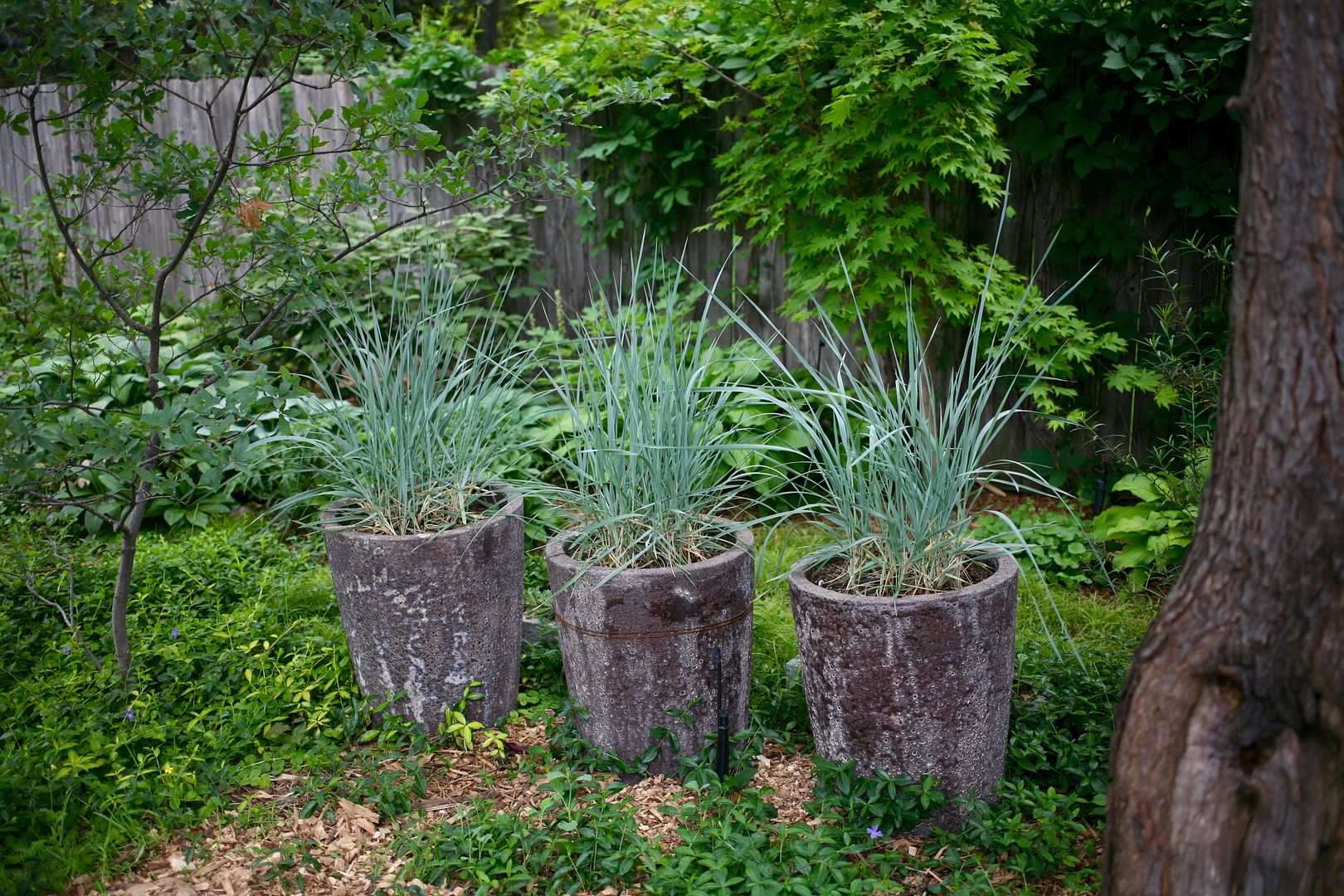

With backgrounds in the visual arts (Carol) and music composition (Randall), the Shinn garden absorbs and reflects their artistry and command of the art of planting, producing some unforgettable moments in June.

I enjoyed your views and insights about this beautiful garden, Denise. You’re so right about how much work went into each of these moments — a fact easily overlooked by the inexperienced visitor. And “moment” is a great way of phrasing it too, because garden flowerings are, by nature, ephemeral. Nothing is static. And on to the next one…
Thank you for sharing your moments in this flowerful garden, Denise! Lots of colorful flowers can disrupt the graceful flow of a garden but that certainly wasn’t a problem in this one.
The gorgeous vignette that opens the post is one of the most restful in this garden, where, I have to say, way too much is going on for me.
Each part is awe-inspiring in the skill, labor, and artistry that’s gone into it. The repeated instances of peaceful, subdued aqua foliage that the house color echoes are wonderful, and are probably much more evident and unifying in less floral parts of the year. The rock choice and placement in several not-explicitly-rock-garden sections are sublime. The dry stream bed with lupines, bearded iris, and Oriental poppies evokes those riveting photos by Lauren Springer that helped The Undaunted Garden (also set in Fort Collins) fly off the shelves all those years ago. Every single plant looks healthy and happy. It would seem difficult to find a spot that wouldn’t produce a pleasing photo vignette.
But… all together in one visual field, *plus* peonies, modern roses, and dwarf conifers: too much. That shady side garden with the three simple pots (another of those echoes of the house color) comes as an especially dramatic relief given the unrelenting brightness of the Colorado sun and the busy-ness of the front garden, but it appears to be designed only as a transition, not a refuge.
However, refuges come in many forms. After a long Rocky Mountain winter, who could deny anyone, much less a colorist like Carol Shinn, the flowers that are her outdoor “thread”? Not me. It’s a phenomenal achievement, whose high points are well communicated by your photos.
@Pam, it takes a lot of bloggers to cover a garden this rich!
@Kris, this one was definitely up your alley.
@Nell, I think as a laboratory for a visual artist, and esp. after a long winter, this is what she needs to see — and the fact that it’s so ephemeral must be incentive to push it. And it is a collector’s garden as well, just as my own is!
What a beautiful garden with lots going on. After a long winter an exuberance of colour is balm for the soul. After their moment of glory the interesting shapes and forms of the plants and their interactions with the rocks bring about a more relaxed but mood. Spring is short in the mountains so this is the typical bloom you would see on hikes.
@Elaine, so true that it’s an entirely different mindset that comes in response to the climate and seasons. The way the cushions of plants arrange themselves on rocks is fascinating, so clear and delineated in shape — I’d love to find hikes to see that.
The textural seedpod-laden plant near the Apache plume is intriguing. It must be quite an early bloomer; wonder if it’s a native, or some other steppe/alpine plant.
Thinking about who besides the Shinns would know the answer reminds me again of Lauren Springer Ogden; what a shame for your visit to Spring Creek that she couldn’t join you (and what a terrible injury for her that made it impossible). I know her background information and conversation would have made her very new garden there a more vivid experience.
@Nell, I did get some photos of Lauren’s work at Spring Creek — can’t wait to show you. Aren’t those seedpods incredible? Since the last snow wasn’t that long before we arrived, makes you wonder what jumped into bloom that quick. It was through Lauren’s writing that I first became aware of Panayoti’s influence in the Denver area — he is beloved there and deservedly so. I hope Lauren mends quickly! She certainly looks energetic and tough as nails. I’m not sure if recovery would be more ideal in winter or summer — slippery in winter but to lose a summer, oy!
Savoring these lovely images again this morning, my eye was caught by another unknown small plant that’s beginning to obsess me. There’s a good look at it in #20 (“Loved all the buckwheats…”), but it’s also in #17 & #18 . It looks something like a tiny maroon allium or unusual dianthus — dark little near-spherical blooms on tall, slim stalks above a clump of grassy foliage. Really outstanding against the grey-green Apache plume and white blooms, and seems to bring out the maroon speckles in nearby rocks.
I’m completely smitten; if anyone has any idea, do post here. I’m sure it’s something that would only grow here in a grit-filled container and even then would curl up its toes in the hot, humid days that are arriving tomorrow. Today’s gift of unusually dry, cool air is probably what cleared my head enough to notice its subtle beauties; it’s sobering to think how many similar discoveries there’d be for someone able to move slowly through the Shinn garden for several hours.
@Nell, I don’t know how we both function sharing just one brain 😉 That plant you ask about, I asked about. It is Dianthus pinifolius, native to Turkey. I didn’t think I had a clear enough photo to warrant naming it, and yet you spied it!
It’s getting eerie, I have to admit… Thanks so much for the i.d., Hipper Half!
D. pinifolius is joining my fantasy scree garden, whose entire existence on the physical plane is as a Pinterest board. (That’s been a great safety valve for me — a way to enjoy plants and planting styles that would just be all wrong here.)